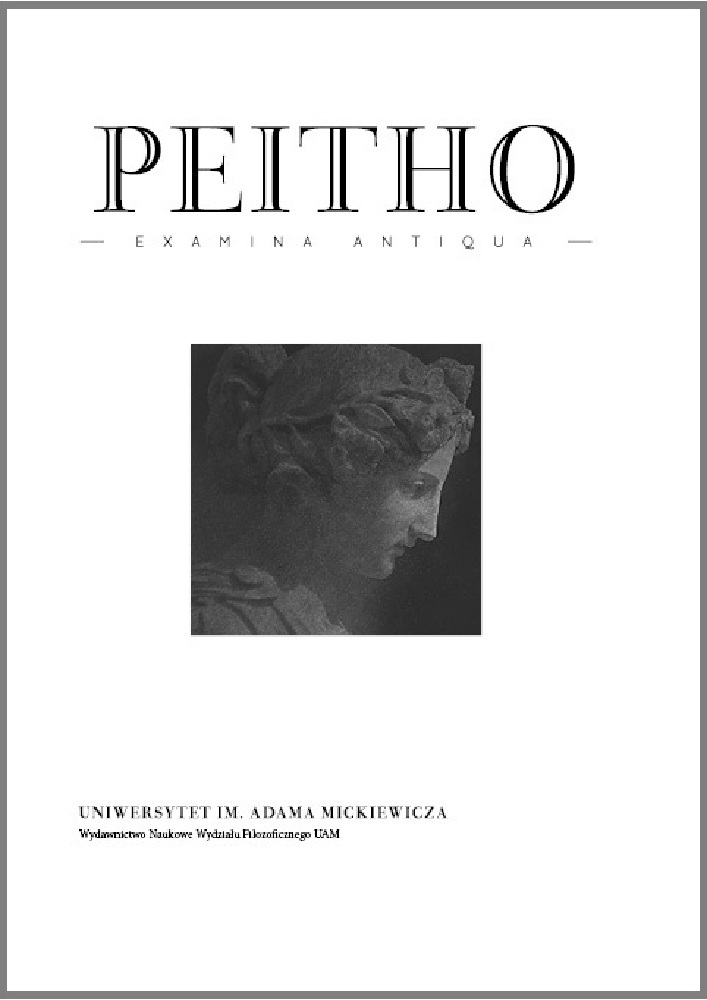Abstract
In his 2013 monograph on Structure and Method in Aristotle’s Meteorologica, Malcolm Wilson has shown both that Aristotle conceived of meteorological phenomena as analogous to the bodily processes of animals, and that for the Stagirite the sublunar world should not be seen as a single body, but rather as composed of many different individuals. However, Wilson did not articulate the relationship between these two theories—that is, he did not answer the following question: how is it possible for the Earth to behave like an animal if it is not a single body? This paper argues that the answer to this question lies in the Aristotelian statement about the different paschein of the Earth and animals. In fact, in the chapter of Meteorology dedicated to climatic changes (1.14), Aristotle, after comparing such changes to the maturing and ageing of living organisms, states that ‘only, in the case of the bodies of plants and animals being affected does not occur in each part separately, but it is necessary for the being to mature and decay all at once, whereas in the case of the Earth this occurs in each part separately, due to cooling and warming’ (351a.28-31). In his commentary, Alexander of Aphrodisias reiterates that the difference between the changes of the Earth and those of living organisms concern the way in which these different subjects undergo affections (pathê). The concept of paschein/pathos is thus fundamental to understanding how Aristotle conceives of biological analogies, which play a key role in his meteorology: as the affections of maturing and corruption show, parallels with organic processes can be found in meteorological phenomena, but always at the level of the individual parts of the Earth. Although the sublunary world can be understood in organic terms, this world is not a ‘cosmic animal’, but rather a multiplicity of ‘regional animals’. To corroborate this thesis, this paper addresses several related questions, including: the mechanics ofenvironmental changes according to Aristotle; the differences between the regions of the Earth; the lexicon used in Meteorology to refer to the transformations of the Earth; the personal notes that Alexander adds to Aristotle’s discussion. Finally, the first modern translation of the relevant section of Alexander’s commentary is also provided here.
References
Chroust, A.-H., 1973, “The .Great Deluge. in Aristotle’s On Philosophy”, L’antiquité classique 42 (1973), pp. 113-122. DOI: https://doi.org/10.3406/antiq.1973.1695
Cohen, S. M., 2012, “Alteration and Persistence: Form and Matter in the Physics and De Generatione et Corruptione”, in: Ch. Shields (ed.), The Oxford Handbook of Aristotle, Oxford, pp. 205-226. DOI: https://doi.org/10.1093/oxfordhb/9780195187489.013.0009
Dimas, P., Falcon, A., Kelsey, S. (eds.), 2022, Aristotle: On Generation and Corruption Book II. Introduction, Translation, and Interpretative Essays, Cambridge. DOI: https://doi.org/10.1017/9781009239936
Fobes, F. H. (ed.), 1919, Aristotelis meteorologicorum libri quattuor, Cambridge.
Freeland, C. A., 1990, “Scientific Explanation and Empirical Data in Aristotle’s Meteorology”, Oxford Studies in Ancient Philosophy 8, pp. 67-102. DOI: https://doi.org/10.1093/oso/9780198242864.003.0003
Groisard, J. (trad.), 2008, Aristote, Météorologiques, Paris.
Hayduck, M. (ed.), 1899, Alexandri Aphrodisiensis in Aristotelis meteorologicorum libros, Berlin.
Horn, Ch., 2016, “The Unity of the World-order According to Metaphysics Λ 10”, in: Ch. Horn (ed.), Aristotle’s Metaphysics Lambda - New Essays. Proceedings of the 13th Conference of the Karl and Gertrud-Abel Foundation DOI: https://doi.org/10.1515/9781501503443-014
Bonn, November, 28th-December 1st, 2010, Boston-Berlin, pp. 269-293.
Huxley, G., 1973, “Aristotle as Antiquary”, Greek, Roman, and Byzantine Studies 14, pp. 271-286.
Irby, G. L., 2016, “Hydrology: Ocean, Rivers, and Other Waterways”, in: G. L. Irby (ed.), A Companion to Science, Technology, and Medicine in Ancient Greece and Rome, Chichester, pp. 181-196. DOI: https://doi.org/10.1002/9781118373057.ch11
Irby, G. L., 2021, Conceptions of the Watery World in Greco-Roman Antiquity, London. DOI: https://doi.org/10.5040/9781350136427
Kupreeva, I., 2022, “Alexander of Aphrodisias on How the Sun Heats: Aristotle’s Meteorology 1.3 in Context”, in: E. Coda (cur.), Letture medievali di Aristotele: il De caelo e le Meteore, Pisa, pp. 47-93. DOI: https://doi.org/10.12871/97888333970164
Lee, H. D. P. (transl.), 1952, Aristotle, Meteorologica, Cambridge-London 1952.
Lewis, E. (transl.), 1996, Alexander of Aphrodisias, On Aristotle Meteorology 4, London.
Lloyd, G. E. R., 1964, “The Hot and the Cold, the Dry and the Wet in Greek Philosophy”, The Journal of Hellenic Studies 84, pp. 92-106. DOI: https://doi.org/10.2307/627697
Louis, P. L. (trad.), 1982, Aristote, Météorologiques, vol. I-II, Paris.
Pajón Leyra, I., Bartoš, H., 2021, “Geography (Chapter 3, 393a9-394a6)”, in: P. Gregorić, G. Karamanolis (ed.), Pseudo-Aristotle: De mundo (On the Cosmos). A Commentary, Cambrdige, pp. 80-120. DOI: https://doi.org/10.1017/9781108876964.006
Pepe L. (trad.), 1982, Aristotele, Meteorologica, Napoli.
Rorty, A. O., 1984, “Aristotle on the Metaphysical Status of .Pathe.”, The Review of Metaphysics 37, pp. 521-546.
Solmsen F., 1958, “Aristotle and Presocratic Cosmogony”, Harvard Studies in Classical Philology 63, pp. 265-282. DOI: https://doi.org/10.2307/310860
Strohm, H. (.bers.), 1970, Aristoteles, Meteorologie. Über die Welt, Berlin.
Thillet, P. (trad.), 2008, Aristote, Météorologiques, Paris.
Tricot, J. (trad.), 1941, Aristote, Les météorologiques, Paris (19552).
Webster, E. W. (ed.), 1923, Aristotle, Meteorologica, Oxford.
Wildberg, Ch., 2004, “On Generation and Corruption I.7: Aristotle on poiein and paschein, in: F. de Haas, J. DOI: https://doi.org/10.1093/oso/9780199242924.003.0010
Mansfeld (eds.), Aristotle: On Generation and Corruption, Book I. Symposium Aristotelicum, Oxford, pp. 219-242.
Wilson, M., 2009, “A Somewhat Disorderly Nature: Unity in Aristotle’s Meteorologica I-III”, Apeiron 42, pp. 63-88. DOI: https://doi.org/10.1515/APEIRON.2009.42.1.63
Wilson, M., 2013, Structure and Method in Aristotle’s Meteorologica. A More Disorderly Nature, Cambridge. DOI: https://doi.org/10.1017/CBO9781107337121
License
Copyright (c) 2023 Chiara Militello

This work is licensed under a Creative Commons Attribution 4.0 International License.
Peitho provides immediate open access to its content on the principle that making research freely available to the public supports a greater global exchange of knowledge.

